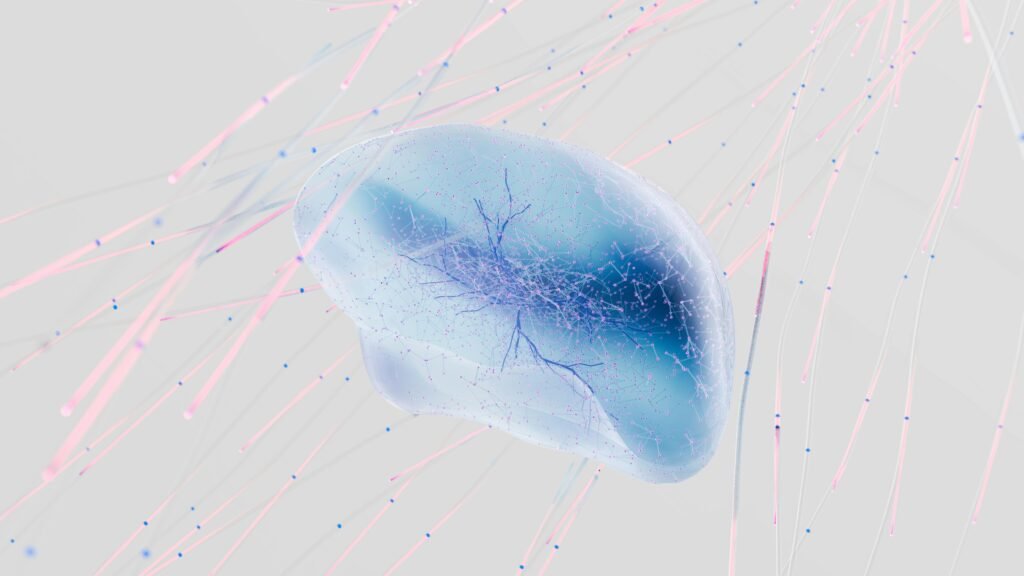
Introduction to Dopamine and Procrastination
While trying to keep pace in a fast moving world, understanding why we procrastinate can be crucial for enhancing productivity.
The science of procrastination is often tied to our brain’s reward system, specifically the role of dopamine.
Dopamine and procrastination are closely linked, as this neurotransmitter plays a significant part in our motivation, focus, and ability to follow through on tasks.
By exploring how imbalances in dopamine levels can trigger procrastination, we can uncover effective strategies to combat it.
Dopamine acts as a chemical messenger in the brain, transmitting signals between nerve cells.
It plays a significant role in how we experience pleasure and reward, impacting our drive to achieve goals.
When dopamine levels are balanced, it becomes easier to stay motivated, make decisions, and maintain focus. However, when there’s an imbalance, our ability to stay on task can suffer.
One reason dopamine levels might fluctuate is due to genetic factors.
Certain genetic variations can influence how much dopamine is produced and how effectively it functions in the brain.
For example, some people have genetic markers that cause higher or lower levels of dopamine, which can directly affect their motivation and tendency to procrastinate.
Beyond genetics, several external factors can disrupt dopamine levels, leading to procrastination.
Stress, for instance, can negatively impact dopamine production, making it harder to concentrate and stay motivated.
Diet also plays a role; foods rich in sugar and unhealthy fats can alter dopamine levels, while a balanced diet can help maintain them.
Additionally, substance use, such as alcohol or drugs, can lead to significant changes in dopamine levels, further exacerbating procrastination.
Understanding the connection between dopamine and procrastination also involves looking at how this neurotransmitter interacts with other brain regions.
The prefrontal cortex, which is responsible for planning and decision making, relies heavily on dopamine to function correctly.
When dopamine levels are off, the prefrontal cortex may struggle to prioritize tasks and manage time effectively, leading to procrastination.
Another critical area is the brain’s reward system, which includes regions like the substantia nigra and the ventral tegmental area (VTA).
These areas help encode reward predictions and reinforce behaviors that lead to positive outcomes.
When dopamine levels are disrupted in these regions, it can lead to difficulties in perceiving rewards and staying motivated, increasing the likelihood of procrastination.
For instance, consider someone who frequently delays starting important projects, even when they know the consequences of their inaction.
This behavior can often be traced back to an imbalance in dopamine levels, affecting their ability to perceive the long term benefits of completing the task.
Understanding how dopamine influences procrastination can be incredibly empowering.
It allows us to identify the root causes of our procrastination habits and develop targeted strategies to address them.
By focusing on maintaining balanced dopamine levels, we can improve our motivation and productivity, making it easier to stay on track and achieve our goals.
Understanding Dopamine Imbalance

Dopamine is a key neurotransmitter that influences motivation, reward, and pleasure.
When dopamine levels become uneven, it can lead to various cognitive and behavioral issues.
This genetic variation can contribute to irregular dopamine levels, impacting motivation and decision making.
Several factors contribute to dopamine irregularity, such as genetic predispositions, stress, diet, and even substance use.
When these functions are disrupted, it can lead to an imbalance, resulting in decreased motivation and focus.
Low dopamine levels can make it hard to get started on tasks or stick to deadlines, leading to procrastination.
For instance, someone with low dopamine may find it difficult to see the rewards of completing a task, making it easier to delay it.
On the other hand, higher dopamine levels can cause an overload of stimuli, making it challenging to focus on one task at a time.
This can also lead to procrastination as the brain constantly shifts attention to new, more stimulating tasks.
Interestingly, genetic factors can also play a role in how dopamine affects our behavior.
This highlights how our genetic makeup can influence dopamine levels and subsequently our habits around procrastination.
Stress is another significant factor that can impact dopamine levels.
High stress can lower dopamine production, making it harder to stay motivated and focused.
Similarly, poor diet can also disrupt dopamine balance.
Consuming too much sugar and unhealthy fats can negatively affect dopamine levels, while a balanced diet can help maintain them.
Substance use, such as alcohol and drugs, can lead to significant changes in dopamine levels.
While these substances may provide short-term pleasure, they can disrupt the brain’s natural dopamine production over time, leading to longer term issues with motivation and focus.
By understanding the factors that contribute to dopamine imbalance, we can begin to see how it impacts our behavior and decision-making.
The Link Between Dopamine Imbalance and Procrastination

The connection between dopamine imbalance and procrastination is significant.
Low dopamine levels can reduce motivation, making it difficult to initiate tasks or stick to deadlines.
On the other hand, higher base levels of dopamine may lower the updating threshold of working memory, allowing more irrelevant stimuli to cause distractions.
This can result in difficulties concentrating and an increased tendency to procrastinate.
Interestingly, genetic factors play a role here as well.
These findings highlight how our genetic makeup can affect dopamine levels and subsequently our procrastination habits.
Stress is another contributor to dopamine imbalance.
High-stress levels can lower dopamine production, making it harder to feel motivated and focused.
This lack of motivation can lead to putting off tasks, even when deadlines are approaching.
Moreover, poor dietary choices can also disrupt dopamine levels.
Consuming too much sugar and unhealthy fats can negatively impact dopamine production, making it even more challenging to stay on task.
Another critical aspect is how dopamine interacts with different brain regions involved in decision making and reward processing.
For example, when dopamine levels are disrupted in areas like the prefrontal cortex, which is responsible for planning and prioritizing tasks, it can become harder to manage time effectively.
Similarly, disruptions in the brain’s reward system, which includes the substantia nigra and the ventral tegmental area (VTA), can make it difficult to perceive rewards accurately and stay motivated.
Consider the case of someone who frequently delays starting important projects.
This behavior can often be traced back to an imbalance in dopamine levels, affecting their ability to see the long-term benefits of completing the task.
This makes it easier to procrastinate since the immediate discomfort of starting a task overshadows any future rewards.
Additionally, the brain’s tendency to seek out short term rewards over long term gains can be amplified by an imbalance in dopamine.
When dopamine levels are low, the brain struggles to find the motivation to pursue activities that don’t provide immediate gratification, leading to procrastination.
Conversely, when dopamine levels are too high, the brain may constantly seek out new and more stimulating activities, making it hard to focus on one task at a time.
These various factors, genetic predispositions, stress, diet, and how dopamine interacts with different brain regions, combine to create a complex picture of how dopamine imbalance can lead to procrastination.
By understanding these connections, we can better manage our behavior and develop strategies to maintain balanced dopamine levels.
Examples of Dopamine Related Procrastination

One clear example of dopamine related procrastination can be seen in students who frequently find themselves delaying studying for exams or completing assignments.
These students might spend hours scrolling through social media or engaging in other non essential activities instead of focusing on their academic responsibilities.
The immediate pleasure from these distractions offers a quick dopamine hit, making it difficult to shift focus to more challenging, less immediately rewarding tasks.
Similarly, consider a professional who has a major project deadline approaching but continuously puts off getting started.
Despite being aware of the impending deadline and its importance, they might find themselves cleaning their workspace, checking emails, or engaging in other trivial activities.
This delay can be traced back to an imbalance in dopamine levels, which affects their ability to prioritize tasks and manage their time effectively.
Another scenario involves someone who regularly makes plans to exercise but continually postpones these sessions.
Even though they understand the long term benefits of regular exercise, the immediate comfort of staying in bed or watching TV often wins out.
This behavior can be linked to low dopamine levels, making it harder for them to find the motivation to pursue activities that don’t provide instant gratification.
Additionally, dopamine imbalances can lead to a constant search for new and stimulating activities, making it challenging to stay focused on a single task.
For example, someone might start working on a report but quickly get sidetracked by an interesting article or a notification on their phone.
This continual shift in attention prevents them from making significant progress on their primary task, leading to procrastination.
Understanding these real world examples highlights how dopamine imbalance can manifest in everyday life, affecting both students and professionals alike.
By recognizing these patterns, individuals can better understand the underlying causes of their procrastination and take steps to manage their dopamine levels more effectively.
Strategies to Manage Dopamine Levels

To effectively manage dopamine levels and combat procrastination, consider incorporating several lifestyle changes and techniques into your daily routine.
These strategies can help stabilize dopamine levels, enhancing your motivation and ability to stay focused on tasks.
First, prioritize regular exercise.
Physical activity has been shown to boost dopamine production, improving mood and increasing motivation.
Aim for at least 30 minutes of moderate exercise most days of the week.
Activities such as walking, jogging, cycling, or even dancing can be beneficial.
Next, focus on maintaining a balanced diet.
Certain nutrients play a crucial role in dopamine production.
Foods rich in tyrosine, such as lean meats, fish, eggs, dairy, nuts, and beans, can support healthy dopamine levels.
Additionally, incorporating fruits and vegetables that are high in antioxidants, like berries, spinach, and kale, can protect dopamine producing neurons from damage.
Adequate sleep is also essential for dopamine regulation.
Poor sleep can significantly disrupt dopamine levels, leading to decreased motivation and increased likelihood of procrastination.
Aim for 7-9 hours of quality sleep per night.
Establish a consistent sleep schedule and create a relaxing bedtime routine to improve sleep quality.
Mindfulness practices, such as meditation and deep breathing exercises, can help manage stress, which is known to negatively impact dopamine production.
Spending just a few minutes each day on mindfulness techniques can reduce stress levels and support dopamine balance.
Additionally, practicing gratitude and positive thinking can promote a more optimistic outlook, further enhancing motivation.
Setting achievable goals can also help manage dopamine levels and reduce procrastination.
Break larger tasks into smaller, manageable steps, and celebrate your progress along the way.
This approach provides frequent opportunities for experiencing a sense of accomplishment, which can boost dopamine levels and keep you motivated.
For some, external accountability can be a powerful motivator.
Share your goals with a friend, family member, or colleague who can help keep you on track.
Regular check ins and encouragement from others can provide the necessary support to maintain focus and motivation.
Creating a conducive work environment is another effective strategy.
Minimize distractions by organizing your workspace, setting clear boundaries, and using tools like timers or productivity apps.
A well-organized and distraction free environment can make it easier to stay focused on your tasks.
Engaging in activities that naturally increase dopamine production can also be beneficial.
Hobbies such as playing a musical instrument, painting, or even engaging in social interactions can provide a pleasurable experience and boost dopamine levels.
Make time for activities you enjoy and that provide a sense of satisfaction.
For those facing persistent issues with dopamine imbalance, seeking professional help may be necessary.
Therapists and healthcare providers can offer targeted support, such as cognitive-behavioral therapy (CBT) or medication, to help manage dopamine levels and improve productivity.
Conclusion

Dopamine’s influence on our motivation and ability to complete tasks is profound.
When our dopamine levels are balanced, we find it easier to focus, make decisions, and stay motivated.
However, when these levels are off, procrastination often follows.
By diving into the connection between dopamine imbalance and procrastination, we’ve uncovered the science behind why it can be so challenging to stay on task.
Recognizing the role of genetics, stress, diet, and substance use in disrupting dopamine levels offers valuable insights.
Each factor contributes uniquely to our brain’s chemistry and, consequently, our behavior.
Understanding these influences can empower us to make informed choices that promote better dopamine regulation.
Practical strategies to manage dopamine levels include regular exercise, a balanced diet, adequate sleep, mindfulness practices, and setting achievable goals.
These lifestyle changes can significantly enhance our ability to maintain focus and motivation.
Engaging in hobbies and creating a distraction free work environment further supports a productive mindset.
For those who find these adjustments insufficient, seeking professional guidance is a viable option.
Therapists and healthcare providers can offer specialized treatments, such as cognitive behavioral therapy or medication, to address dopamine imbalances effectively.
Ultimately, understanding and managing dopamine’s role in our lives can help us overcome procrastination and improve our overall well being.
By taking proactive steps to support healthy dopamine levels, we can achieve greater productivity and satisfaction in our daily lives.
